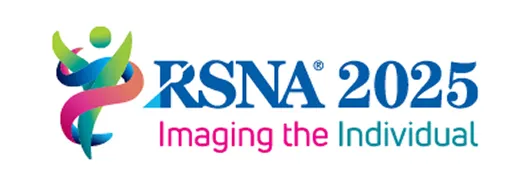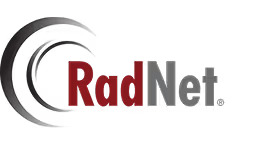In today’s imaging environment, every dollar counts. Between staffing pressures, compliance demands, and workflow inefficiencies, many imaging operations struggle to maintain profitability. Virtual contrast supervision—when implemented thoughtfully—offers a compelling path to cut costs, unlock new revenue streams, and improve overall financial performance.
Maximizing ROI: How Virtual Supervision Drives Revenue in Imaging Operations
In today’s imaging environment, every dollar counts. Between staffing pressures, compliance demands, and workflow inefficiencies, many imaging operations struggle to maintain profitability. Virtual contrast supervision—when implemented thoughtfully—offers a compelling path to cut costs, unlock new revenue streams, and improve overall financial performance.
Below, we outline key levers by which virtual supervision can drive ROI, supported by real-world examples, projections, and operational logic.
The Macro Opportunity: Telehealth’s Scale as a Proxy
To start, consider the broader telehealth landscape. A McKinsey-based analysis, referenced in a Fierce Healthcare article, suggests that up to $250 billion of U.S. healthcare spend could shift to virtual or near-virtual modalities (roughly 20 % of outpatient, home health, and office spend).
While imaging and contrast supervision is a narrower slice of that, the broader shift underscores how telehealth and virtual models are becoming central to delivering value across healthcare. In that context, imaging operations that adopt virtual supervision early can capture disproportionate gains in utilization, throughput, and margin. ContrastConnect was built to live in that in-between and help imaging operations go digital.
How Virtual Supervision Drives ROI
1. Fewer Cancellations and No-Show Losses
One of the biggest hidden drains on imaging revenue is canceled contrast studies due to lack of supervision staff, last-minute staffing gaps, or logistical issues. Virtual supervision reduces these gaps by ensuring coverage—even evenings, weekends, or remote sites—so fewer appointments have to be canceled or postponed.
Less downtime means more consistent use of scan slots, and those extra scans translate directly into incremental revenue.
2. Increased Volume of Contrast Studies
By eliminating supervision constraints, imaging operations can schedule more contrast-enhanced studies. Whether converting non-contrast slots into contrast-capable ones or expanding into underserved locations, the ability to supervise virtually allows you to capture demand that would otherwise go unmet.
Imagine a facility that, after deploying virtual supervision, increases contrast-enabled CT/MRI volume by 10–20 %. That gain can cover the cost of the supervision platform—and then some.
3. Extended Hours and Flexible Shifts
Traditional supervision models often restrict contrast-capable hours because you need a radiologist physically present or on-call. Virtual supervision decouples staffing from location, allowing imaging centers to extend hours, add evening or weekend contrast slots, and service broader patient populations without incurring overtime or travel costs.
More hours = more throughput = more revenue.
4. Lower Fixed Overhead
Hiring full-time supervising radiologists, maintaining support infrastructure (redundant connectivity, backup equipment), and managing HR/credentialing across multiple sites are expensive. Virtual supervision allows you to shift those fixed costs to a variable, service-based model, reducing capital risk and removing duplication across sites.
Because you don’t have to provision hardware or dedicated coverage in each location, your overhead falls and your margins expand.
5. Better Utilization of Radiologist Time
With virtual supervision, radiologists can oversee multiple sites or shifts more efficiently, rather than sitting idle at one location waiting for contrast cases. This efficiency lets you get more “supervision hours per radiologist” without increasing headcount.
Case Examples & Projections
Hypothetical Imaging Center
- Say a center performs 200 contrast-enhanced scans per month, each reimbursed at $300. Total contrast revenue = $60,000/month.
- With virtual supervision, imagine they add 10% more scans (20 extra scans) = +$6,000 revenue.
- Then add benefits from fewer cancellations, extended hours, and better radiologist utilization—that net gain might even double.
Realistic Example (Inspired by peer clients)
Some imaging operations report double-digit increases in completed contrast studies after adopting virtual supervision. Even a 10–15 % lift (as has been observed in partner sites) can meaningfully shift margins.
When multiplied across multiple sites in a network, the compounding effect becomes material.
Why ContrastConnect Is Built for ROI
ContrastConnect delivers virtual supervision with these advantages in mind:
- Physician-led supervision with licensed radiologists ensures high clinical trust.
- Centralized platform and portal consolidate scheduling, onboarding, reports, and logs, removing duplication across sites.
- Scalable coverage that allows radiologists to supervise across multiple locations without fixed overhead.
- Audit-ready compliance with secure logs, timestamped records, and incident documentation.
- Support for growth and extended hours, enabling imaging centers to capture demand they otherwise couldn’t.
The Bottom Line
Virtual supervision isn’t just a cost-saving tool — it’s a revenue accelerator. By reducing cancellations, enabling more scans, extending hours, and lowering overhead, virtual supervision offers a clear path to stronger margins and sustainable growth.
If you’re ready to explore how your imaging operation can maximize ROI through virtual supervision—start with a conversation.












